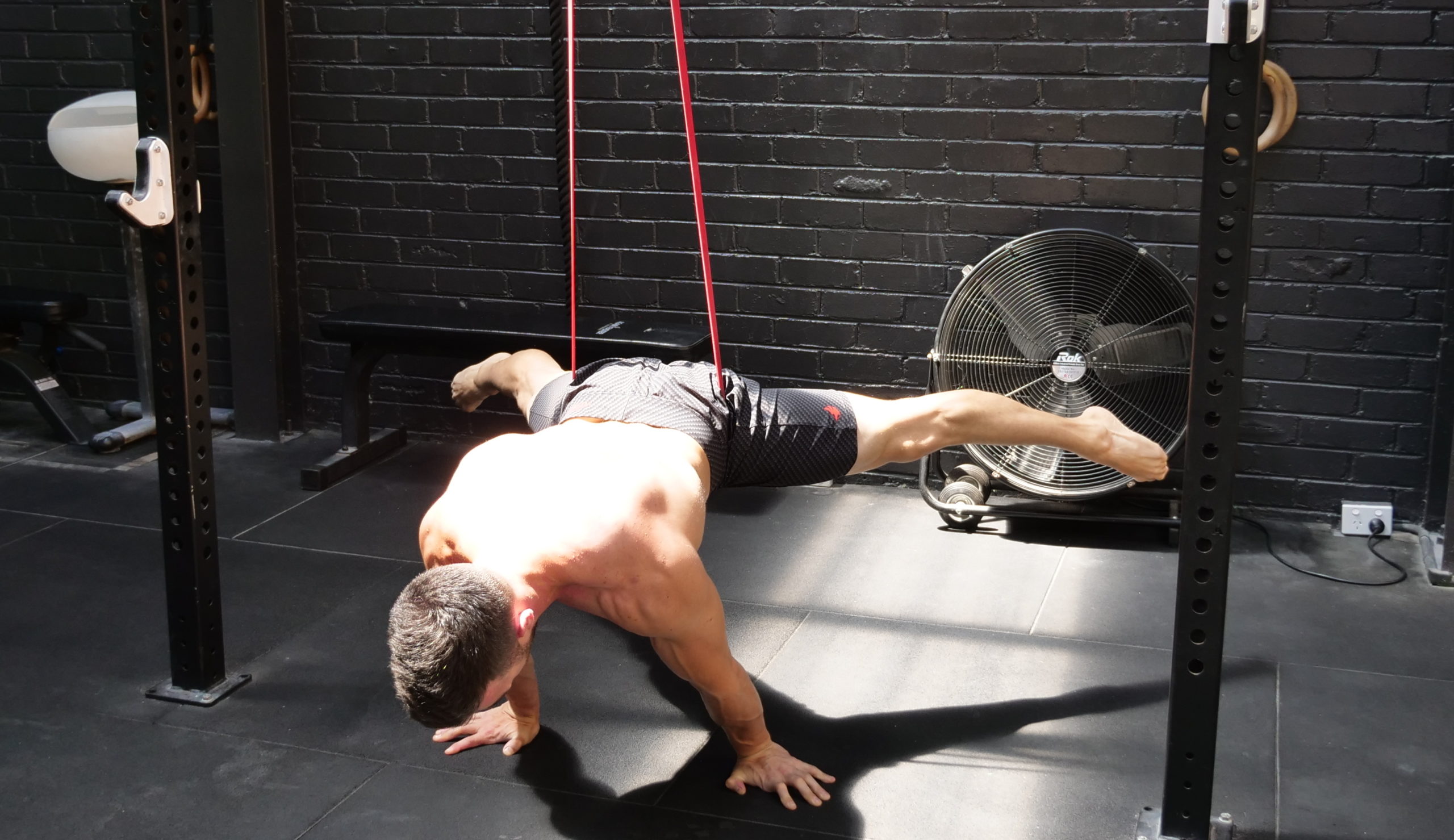
4 March 2020 Band Assisted Planche Push-ups – Are you wasting your time?
The band assisted isometric planche is a great exercise to overcome plateaus by accumulating time under tension in a position you are unable to hold unassisted. This allows you to become familiar with the goal position and work towards it in a scalable and objective manner, using progressively thinner bands. But what about banded planche push-ups?
Before discussing the value of band-assisted planche push-ups, you should have an understanding of strength curves and variable resistance; which I will explain using the example of a squat.
Most exercises have a variable strength curve; meaning you do not have the same capacity to produce force at all points throughout the movement. The squat is weakest at the bottom of the lift, while more force is able to be generated closer to the top. Consequently, you are able to squat significantly more weight with a ¼ range squat compared to a full squat. For example, a person may have a 1RM of 100kg for a full squat but could ¼ squat 130kgs.
Due to this disparity in strength through range, some lifters like to utilise bands or chains to make the resistance of their squat better match the natural strength curve of the exercise. This works by providing progressively more resistance throughout the lift. When you hang chains over the bar, a portion of each chains rest of the ground. As you rise, the chains lift off the ground, increasing the weight the higher you go. The person described above could put 90kgs of weight onto a bar and 40kgs of chains; at the bottom of the lift they are squatting 100kg and at the top they are squatting 130kgs, providing a challenging stimulus at all points through range. This same principle can be used with bands.
Despite the standard squat having a variable strength curve, is it well accepted that squats are an effective exercise for building strength and muscle mass. However, banded/chain squats are not necessarily preferred by powerlifters, with many using standard squats as their fundamental exercise.
The reason banded/chain squats do not seem to provide a superior result for improving squat 1RM is that the limiting portion of a squat is a comparatively small range of motion close to the bottom. Both banded/chain and standard squats seem to challenge this portion similarly, providing the same stimulus for strength gains where it really matters. Using accommodating resistance unintelligently can even hinder progress; for example, if the person above trained using 50kgs on a bar and 80kgs of chains, the exercise would not be challenging at the standard sticking point with only 60-70kgs of resistance, despite providing a challenging 130kgs of resistance at the top. If the goal is improving squat 1RM, training in this manner will not provide enough stimulus at the bottom for strength gains and will instead build superfluous strength at the top of the movement.
Although training with bands is not superior for improving 1RM, there are applications where it is beneficial over a standard squat. For example, with the goal of improving vertical jump by maximizing strength throughout range, or if ¼ squat 1RM was important in addition to full squat 1RM, banded training would be preferable.
The above knowledge can also be applied to a variety of exercises, including the planche push-up, which has a variable strength curve in opposition to the squat. In the planche push-up, you are naturally stronger at the bottom when the arms are bent and weakest at the top when the arms are straight.
The concern some have with band-assisted planche push-ups is that bands provide the most assistance at the bottom where you are strongest, and the least assistance at the top where you need it the most. To optimize strength through all points in range you would want the opposite of this.
Despite this “flaw”, they are still an effective exercise to build strength as they challenge the weakest portion of range, stimulating gains at the limiting point. By building strength near the top, you will cause a more even strength curve in your planche push-up. They also allow you to familiarise yourself with and practice the motor pattern of a planche push-up, helping you to understand and achieve the skill.
Although reserves in strength in the lower range of the planche is not required for planche push-ups, optimising strength through range can be useful. This can allow you to achieve planche push-ups before you are able to hold a straight-arm planche; as you may be able to generate enough power at the bottom to push up to the straight arm position. It is also useful for high level athletes who are training more advanced skills like the clapping planche push-up.
A useful exercise to help match intensity to the strength curve when training toward planche push-ups is the mechanical advantage planche-push-up. For a video and description of this exercise, click here.
In summary, although they do not match the natural strength curve of the planche push-up, band-assisted planche push-ups are still a useful exercise. Finally, don’t have to choose between exercises and can implement multiple related exercises to help build strength specifically where it matters to you. For example, you may do banded planche push-ups, pseudo planche push-ups, and mechanical advantage planche push-ups all in one session or mesocycle depending on your goals and resources.
Happy training.


Hetty
Posted at 20:59h, 04 MarchHigh quality explanation reveals deep knowledge and competence. Thanks for sharing your expertise.
John Ji
Posted at 02:33h, 10 Marchlearned a lot! We met a Xalt Fitness in L.A. a few years ago! always look up to you.